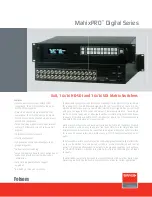
Enterasys Matrix DFE-Gold Series Configuration Guide
18-1
18
Network Address Translation (NAT) Configuration
This
chapter
describes
the
Network
Address
Translation
(NAT)
configuration
set
of
commands
and
how
to
use
them.
Configuring Network Address Translation (NAT)
The
Enterasys
Network
Address
Translation
(NAT)
implementation
supports
Basic
NAT
and
Network
Address
Port
Translation
(NAPT).
In
addition,
the
following
features
are
also
supported:
•
Static
and
Dynamic
NAT
Pool
Binding
•
FTP,
DNS,
TELNET,
SSH,
TFTP,
HTTP,
NTP
(Network
Time
Protocol),
and
ICMP
(with
five
different
error
messages)
software
path
NAT
translation
•
Force
Flows
(Secure
Plus)
Both
basic
NAT
and
NAPT
are
referred
to
as
traditional
NAT
and
provide
a
mechanism
to
connect
a
realm
with
private
addresses
to
an
external
realm
with
globally
unique
registered
addresses.
Basic
NAT
is
a
method
by
which
IP
addresses
are
mapped
from
one
group
to
another,
transparent
to
the
end
user.
NAPT
is
a
method
by
which
many
network
addresses,
along
with
their
associated
TCP/UDP
ports,
are
translated
into
a
single
network
address
and
its
associated
TCP/UDP
ports.
The
static
address
binding
feature
is
designed
for
both
the
basic
NAT
and
NAPT
implementations
to
support
static
and
no
expire
binding,
between
inside
and
outside
NAT
address
translation.
It
supports
one
‐
to
‐
one
binding,
local
addresses
to
global
addresses,
and
TCP/UDP
port
number
translations.
The
dynamic
address
binding
feature
is
designed
for
both
the
basic
NAT
and
NAPT
implementations
to
support
dynamic
binding
between
an
address
from
an
access
‐
list
of
local
addresses
to
an
address
from
a
pool
of
global
addresses.
IP
addresses
defined
for
dynamic
binding
are
reassigned
whenever
they
become
available
from
the
global
address
pool.
NAPT
allows
port
address
translation
for
each
IP
address
in
the
global
pool.
The
ports
are
dynamically
assigned
between
a
range
of
1024
to
4999.
It
is
sometimes
possible
for
a
host
on
the
outside
global
network
that
knows
an
inside
local
address,
to
be
able
to
send
a
message
directly
to
the
inside
local
address
without
NAT
translation.
The
force
flows
feature,
set
using
the
command
ip
nat
secure
‐
plus
on
page 18
‐
7
,
is
designed
to
force
all
flows
between
the
inside
local
pool
and
the
outside
global
network
to
be
translated.
Router:
Unless otherwise noted, the commands covered in this chapter can be executed only
when the device is in router mode. For details on how to enable router configuration modes, refer to
“
Enabling Router Configuration Modes
” on page 2-103.
Note:
An Enterasys Feature Guide document that contains a complete discussion on NAT
configuration exists at the following Enterasys web site:
http://www.enterasys.com/support/
manuals/
Summary of Contents for Enterasys Matrix DFE-Gold Series
Page 1: ...P N 9033933 15 Enterasys Matrix DFE Gold Configuration Guide Firmware Version 6 11 xx...
Page 2: ......
Page 40: ...Getting Help xxxviii About This Guide...
Page 148: ...Reviewing and Configuring Routing router 2 106 Startup and General Configuration...
Page 300: ...Configuring SNMP Walk Behavior set snmp timefilter break 5 42 SNMP Configuration...
Page 456: ...Configuring Policy Based Routing ip policy pinger 8 50 Policy Classification Configuration...
Page 576: ...Configuring NetFlow clear netflow template 15 12 NetFlow Configuration...
Page 610: ...Configuring Debug IP Packet no debug ip packet 16 34 IP Configuration...
Page 922: ...Understanding RADIUS Snooper show radius snooping session 26 12 RADIUS Snooping Configuration...
Page 940: ...Configuring Multiple Authentication show multiauth trap 27 18 MultiAuth Configuration...
Page 944: ...Index 4...
















































